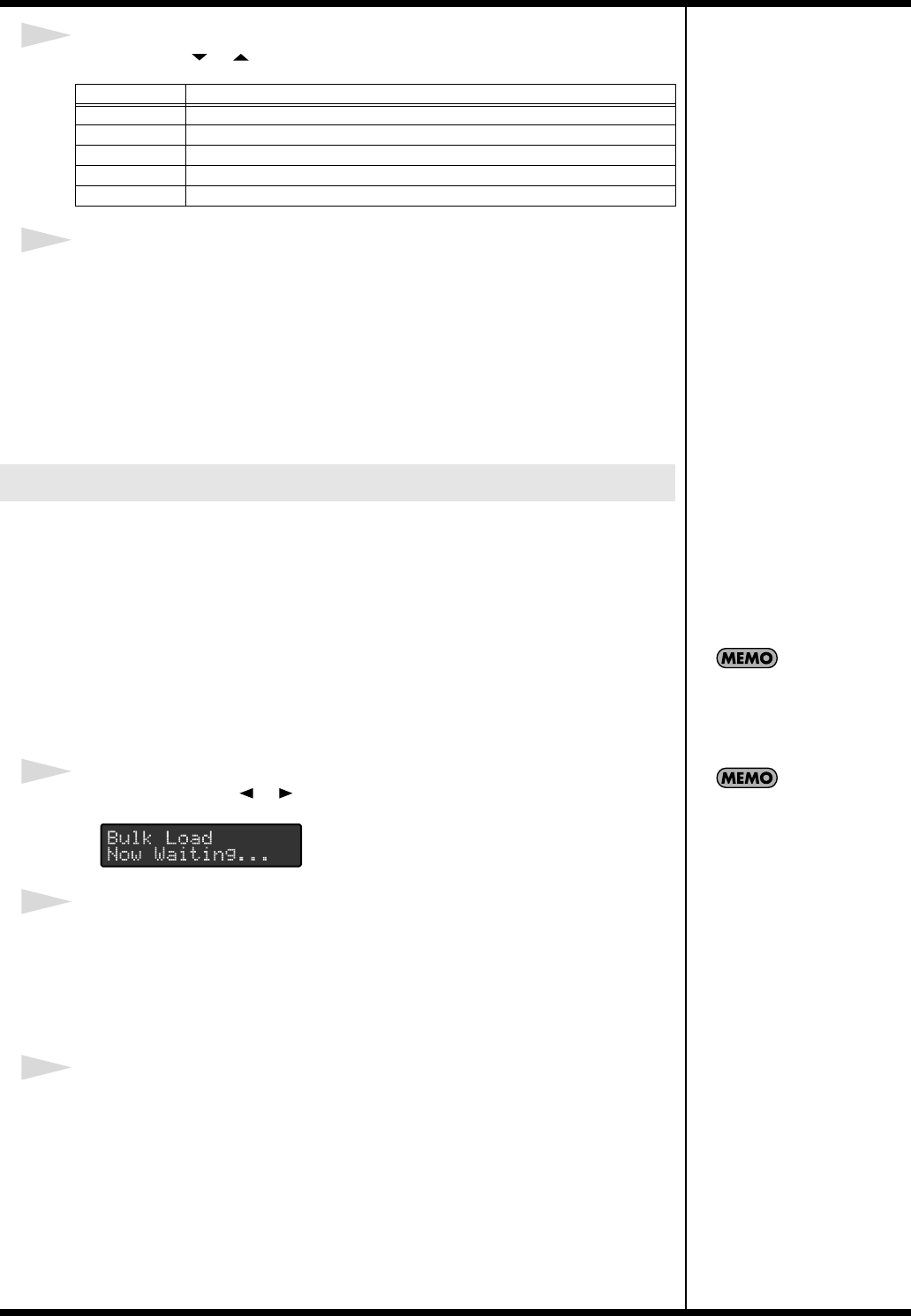
54
Other Features
2
Press VALUE [ ] [ ] to make the setting.
3
Press [WRITE].
The “Now Sending...” message appears in the display when the FC-300 sends the
data. The top screen appears in the display when the FC-300 finishes sending the
data.
If either ALL, CONTROL, or PATCH is selected in Step 2, the message “Erase Tmp
Data Sure?” is displayed.
Press [WRITE] again; the data currently being edited (unsaved) in Control Change
mode and Patch mode is erased, and then the bulk dump begins.
FC-300 can receive the setting saved in the sequencer or the other FC-300 with
identical settings.
Making the Connections
• When receiving data saved to a MIDI sequencer
Connect the MIDI sequencer’s MIDI OUT to the FC-300’s MIDI IN connector
with a MIDI cable.
Transmitting
1
Press PARAMETER [ ] [ ] to select “Bulk Load.”
2
Transmit the data.
The “Now Receiving...” message appears in the display when the FC-300 receiving
the data.
The bulk load processing ended when the message “Now Waiting...” appears in the
display.
3
When you’ve finished receiving the data, press [UTILITY] or [EXIT].
The data is saved, and the FC-300 returns to the top screen.
Value
Explanation
ALL
All settings (UTILITY, STANDARD, CONTROL, PATCH) are transmitted.
UTILITY System parameter settings are transmitted.
STANDARD Standard Mode settings are transmitted.
CONTROL Control Change Mode settings are transmitted.
PATCH Patch Mode settings are transmitted.
Receiving Data from an External MIDI Device (Bulk Load)
For instructions on operating
the MIDI sequencer, see the
owner’s manual that came
with your MIDI sequencer.
J
ust as when transmitting data
to a MIDI sequencer, match the
FC-300’s and MIDI sequencer’s
Device ID settings (p. 52).
FC-300_e1.book 54 ページ 2007年4月24日 火曜日 午前10時10分


















